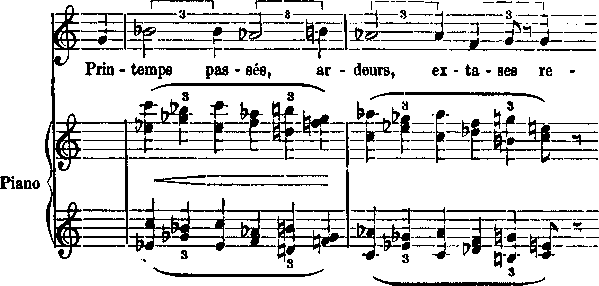Debussy: The Preludes 167

have established a direct and certainly exaggerated connec-
tion between the harmonic styles of the two composers.
The passage in question may well represent an unconscious
reminiscence, on Debussy’s part, of a song with which we
know he was acquainted. But the fact still remains that
the measures from “Without Sunlight” are far more char-
acteristic of Debussy’s than they are of Moussorgsky’s style.
They represent, on the part of the latter composer, one
of those mysterious anticipations of the language of a
future age, of which there are so many examples in musical
history and which have too often tended to provoke con-
troversies that are more amusing than they are illumi-
nating.
The origins of Debussy’s harmonic style are to be sought
elsewhere; in Liszt, Chabrier and Fauré, rather than in
Moussorgsky. The affiliations between Liszt’s harmony
and the harmony of Debussy are real but somewhat ob-
scure and are most apparent, perhaps, in one or two mu-
tually characteristic ways of connecting triads. The free
and expressive manner in which Fauré uses seventh chords
is prophetic of Debussy’s similar and later use of chords
of the ninth. The following Cadential formula,
More intriguing information
1. The Social Context as a Determinant of Teacher Motivational Strategies in Physical Education2. The name is absent
3. IMPACTS OF EPA DAIRY WASTE REGULATIONS ON FARM PROFITABILITY
4. The Advantage of Cooperatives under Asymmetric Cost Information
5. L'organisation en réseau comme forme « indéterminée »
6. DETERMINANTS OF FOOD AWAY FROM HOME AMONG AFRICAN-AMERICANS
7. On Evolution of God-Seeking Mind
8. Knowledge and Learning in Complex Urban Renewal Projects; Towards a Process Design
9. FUTURE TRADE RESEARCH AREAS THAT MATTER TO DEVELOPING COUNTRY POLICYMAKERS
10. The name is absent